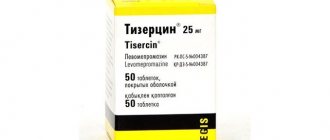The earliest manifestations of confusion and disorientation include a sharp decrease in concentration. During progression, there is a complete disruption of sensitivity to the outside world, memory lapses occur, logical thinking is modified, the patient does not understand what is happening, recognizable memory and full-fledged speech are impaired, and emotional distress occurs. As a result, depression, silence and inactivity of a person are recorded. The psychiatrist must distinguish between these aspects and provide a presumptive diagnosis when communicating with the patient.
What is a confused state?
In this process, the ability to think at an average speed disappears, the clarity and consistency of thoughts is significantly destroyed.
Content:
- What is a confused state?
- Causes
- Symptoms
- What is disorientation?
- Current of development
- Medical classification
- Symptoms of the disease
- Benefits of diagnostics
Signs of the disorder are problems with orientation in space and deterioration of attention. Logical thinking disappears and memory is degraded. The highest signs of the psyche change one by one. For example, only speech recognition may be affected. Memory problems are noted, spatial orientation is impaired. There are two types of confused consciousness, depending on the cause of its occurrence - fast and slow.
Manifestations can be one-time or permanent. Dementia and delirium are signs of the latter condition. The integrative function of thinking at the moment of confusion is absent. Along with the expected change, the patient is often silent, moves little, and is depressed outwardly. Illusions and hallucinations accompany the disease. The first arise because the body incorrectly perceives the stimulus, while hallucinations manifest themselves independently. Each person suffers from the disease differently - the determining factor is the underlying cause of the development of the disorder. Slowness of thinking and inconsistency of logical series are emphasized during the first minutes of conversation. Even non-professionals can notice the initial symptoms.
Psychotherapists divide delirium into several classifications: hallucinatory (the ability to see non-existent information); manic (obsession with aggression); catatonic (inability to fully move); confabulatory (twisting of an obvious fact).
Disorders of consciousness in mental illness
Prepared by: MedWeb
In mental illnesses, various forms of disturbances of consciousness are observed. This article talks about the main ones.
disorders of consciousness, psychiatrist
Impaired consciousness inevitably leads to disorientation and an incorrect attitude of the patient to the outside world. It is also expressed in the patient’s incorrect attitude towards himself. Symptoms of a disorder of consciousness are unique and varied. An example of a change in consciousness inherent in the normal functioning of the nervous system is sleep and dreams.
For mental illnesses caused by drugs (alcohol, etc.), for various poisonings (lead, lamp gas, atropine, etc.), for mental disorders caused by infection (for example, typhus), for head injuries (wounds, concussions) ) pronounced disturbances of consciousness are often observed.
Disorders of consciousness appear in many mental illnesses. They are often unnoticeable. Consciousness is most sharply upset during the acute, violent course of psychosis. There are states of stunned, confused , delirious , twilight and affectively narrowed consciousness . When stunned, external irritations poorly reach the patient’s consciousness, and all mental processes are slowed down; with confusion of consciousness, the flow of mental processes is sharply disrupted: thoughts are fragmentary, perceptions are splintered, statements are incoherent (the patient’s mental life becomes chaotic, and his understanding of the environment and his situation completely disappears). Delirious disorder of consciousness is accompanied by hallucinations (mainly visual), delirium, and fears. Patients in a delirious state are fussy and restless. Their consciousness of “I” is usually not disturbed, although the perception of the external world turns out to be incorrect.
In a twilight state, consciousness is darkened and at the same time completely occupied by some ideas or experiences that absorb the patient’s attention and disrupt his connection with the outside world. The behavior of patients may seem orderly, even expedient, which easily misleads others about the patient’s condition. The possibility of orderly behavior is explained by the fact that patients in a twilight state often strive for a certain goal and, in this narrowed sense, partially perceive reality.
The possibility of dangerous actions arises when the central experience of this period is accompanied by a tense affect of fear, expectation of danger, and delusional ideas dictating any aggressive actions. In twilight states of this kind, serious motiveless crimes (murder, arson, etc.) can be committed. With an epileptic disorder of consciousness (associated with seizures or independent of them), as well as with pathological intoxication, a predominantly twilight state of consciousness is observed.
Affectively narrowed consciousness differs significantly from twilight consciousness. It is related to the external situation and represents a reaction to real life events. The resulting affect of anger, fear, grief, joy limits the object of perception, the choice of actions, and gives these actions an impulsive character. In most such cases, the ability to correctly understand reality and control oneself is not lost. Only in some cases does the affectively narrowed consciousness take on a painful character.
In this case, a series of actions can be observed that are no longer in direct and understandable connection with an external event, performed automatically, sometimes with paralysis of the senses. So, for example, a woman, insulted by her husband, after some time, already in a state of stupor, moving as if in a hypnotic trance, spills kerosene on the floor in order to burn herself, her husband and two very beloved children. When she was prevented from doing this, she remained in a state of stupor for some time, sat motionless, then suddenly began to cry bitterly and hug the children.
Resolving the issue of the state of consciousness is especially important in the forensic psychiatric assessment of so-called temporary disorders of mental activity (pathological intoxication, pathological affect, impulsive actions, twilight states of consciousness).
Causes
The following reasons for the occurrence of the phenomenon of confused consciousness are identified:
- traumatic (consequences of penetrating traumatic brain injury);
- in case of brain injury (organ tissues are highly sensitive);
- the occurrence of an aneurysm (an enlarged blood vessel affects neighboring tissues);
- mercury poisoning;
- increased dose of alcohol in the blood;
- drug intoxication;
- effects of neurotropic gas on the respiratory system;
- entry of organophosphorus compounds into the digestive system;
- poisoning with neurotoxic substances – puffer fish, mushrooms, carambola;
- hyperthermia resulting from infectious diseases;
- pain shock during a fracture, dislocation, significant blood loss;
- severe diseases - tuberculosis, encephalitis, diabetes mellitus, all types of hepatitis, acquired human immunodeficiency syndrome at the final stage of development;
- progression of the growth of a cancerous tumor at the last stage - decay (during the process intoxication occurs);
- coronary heart disease, all types of strokes, occurring both unnoticed and obvious;
- myocardial infarction, with pronounced pain and impaired blood flow;
- vegetative-vascular dystonia – dilation of blood vessels occurs in areas of the autonomic nervous system of the body;
- age-related diseases: senile dementia, Alzheimer's disease, marasmus of all types;
- bright emotional outburst;
- hypothermia;
- a period without sleep for a long time;
- oxygen starvation;
- 1st and 2nd degree stunning.
MedGlav.com
A disorder of consciousness is a painful condition in which the reflection of the real world becomes distorted (delusions, hallucinations, twilight state, etc.). The term disorder of consciousness is mostly understood as a particular type of it— stupefaction. This transient painful state is characteristic of some mental illnesses; it indicates the severity of the condition, danger to life and requires urgent medical care for the patient. With a darkened consciousness, both stages of cognition are disrupted simultaneously - both the direct, sensory-concrete, objective reflection of the real world, and the highest level - rational, abstract cognition of internal connections and phenomena.
Characteristic signs.
A darkened consciousness is characterized by a mandatory combination of four signs:
- Detachment from the real world, in which the patient’s perception of external events is impossible or difficult; the world is perceived as separate, unconnected pieces, fragments, as in a dream: the patient perceives some events and does not notice others, does not catch the sequence of actions of those around him;
- Orientation in the surrounding place, time, events, persons is difficult, disturbed, incorrect: the patient believes that he is not in the hospital, but at work, he is surrounded by colleagues, not patients, confuses dates, says his last name incorrectly;
- Thinking and speech are largely incoherent: the patient makes conclusions and conclusions that not only do not correspond to reality, but contradict what he just said;
- Remembering what happened and experienced during the period of clouding of consciousness is difficult; subsequent memories are fragmentary or completely absent.
Causes. Stupefaction can be of varying duration (from minutes to weeks), of varying depth (from a slight disturbance of perception to a complete lack of reaction to any events in the external and internal world) and different in course. Disorders of consciousness occur:
- for injuries and brain tumors,
- acute infectious diseases,
- severe mental experiences,
- poisonings,
- epileptic seizures and some other life-threatening painful conditions.
Clinical forms.
The most common clinical forms of disorders of consciousness are the following:
Stunning is a sharp decrease (up to complete absence) of sensitivity to any stimuli, difficulty, slowing down, impoverishment of associations. It is necessary to call out loudly and persistently several times or ask a basic question so as not to immediately receive a monosyllabic, often incorrect answer, uttered in a quiet voice, after which the patient again falls into indifferent silence, as if into a dreamless sleep. The degree of stunning can range from very mild (as happens in the first minutes after a mild skull injury) to very severe, when the patient does not respond even to severe pain and his breathing and blood circulation are depressed (as happens in severe poisoning). A light stun can always turn into a heavy one. Therefore, a stunned patient should never be left, providing assistance in maintaining cardiac activity, breathing and trying to eliminate the cause that caused the stun (for example, poison in case of poisoning).
Delirium (from the Latin delirium - madness) is a disorder of consciousness with an abundant influx of bright, moving, frightening, scene-like visual hallucinations and figurative, picture memories, as well as figurative delirium of persecution, etc. The orientation is false: for example, a hospital is mistaken for a prison, a factory, theater. The mood is changeable - fear, delight, tenderness and complacency replace each other. The patient is mobile, excited, anxious. Delirium sometimes takes on a professional character (for example, a tailor in a hospital continues to “sew,” etc.).
At times, the clouding of consciousness is quite mild. So, at a high temperature during the flu, the patient becomes talkative, excited and at times “conspiracy” - a sequential story is suddenly interrupted by several phrases from another area, and the patient himself realizes that he is not saying what he wanted. These first manifestations always threaten to develop into full-blown delirium. The latter is interrupted by periods of full consciousness. Delirium occurs most often at the height of an infectious disease or poisoning (typhus, alcohol poisoning, etc.) and lasts from several hours to several days, intensifying towards night. If the course is unfavorable, the stage of “mumbling” delirium begins - speech is incoherent, the patient is restless.
With modern means of reducing agitation ( aminazine, reserpine , etc.) and timely administration of drugs that stimulate cardiovascular activity, delirium usually passes with subsequent fragmentary memories of the experience.
Amentia (from Latin amentia - meaninglessness) is similar to the last stage of delirium. Amentia occurs after long-term debilitating illnesses and is characterized by incoherent speech, tossing in bed and confusion; no memory of the experience is retained.
Dreamlike (oneroid, from the Greek oneiro-des - similar to dreams) is a disorder of consciousness close to delirium. Often fantastic dreams and reality are intertwined, as in a dream. The patient is inactive, silent and participates in the events he experiences, as in dreams. Dream disorder of consciousness lasts up to several weeks and occurs with typhoid fever and other infections, as well as with schizophrenia and other psychoses.
Twilight state is a sudden clouding of consciousness, lasting from several minutes to one or two hours, also ending suddenly, most often with a transition into deep sleep. The patient is completely unoriented in place and time. His actions are sequential, but do not follow from the given situation, but are caused by a sudden influx of usually frightening delusions and hallucinations. Behavior, mood, facial expressions are colored with anger, melancholy, and rage. Often, under the influence of these pathologies and experiences, the patient commits serious offenses and crimes. Not only is there not the slightest memory of everything that happened and happened in the twilight state, but the patient’s attitude towards what happened and what happened is usually as if it was done by someone else, and not by the patient himself. The twilight state is characteristic of epilepsy, organic psychoses, less often of hysteria and some other mental illnesses. During the twilight state, the patient must be carefully observed, carefully restrained and, as prescribed by the doctor, given drugs that reduce arousal, induce sleep, etc.
Symptoms
For a primary diagnosis, it is necessary to detect the active progress of processes:
- shallow memory lapses (information is lost within a few minutes);
- the patient cannot recognize his loved ones, as well as basic passport data;
- there is no memory of the person’s information field;
- disorientation;
- unconditional changes in mood (an aggressive mood can manifest itself even among close people);
- there is no logical chain in the pronunciation of phrases (pronunciation speed is below average);
- lack of control over the bladder and sphincter (constant urination and defecation);
- Normal sleep is completely disrupted.
Sometimes the cause of such manifestations is cervical osteochondrosis. The clinical picture in this case changes - pain in the cardiac and chest region is added, movement is limited, and there is increased sweating.
Due to internal bleeding, additional aspects appear: excessive sweating; pale skin; black stool; high blood pressure; worsening breathing; tachycardia.
Psychological disorder, in turn, entails inappropriate behavior, aggressive attacks, lack of normal sleep, terrorizing the immediate environment, the emergence of helplessness and the collapse of a clearly established internal model of behavior.
If the patient experiences the changes described above, you should immediately contact your local psychiatrist. Next, a conversation is held, but not in private, but in the presence of a relative. Additionally, blood donation is prescribed for general and biochemical blood and urine tests. An electrocardiogram, ultrasound examination of internal organs, Doppler sonography of all key vessels, magnetic resonance imaging if necessary, and oral consultation with specialists are performed.
What is disorientation?
It is classified as a mental disorder and can cause certain changes in the functioning of the central nervous system. It is divided into short-term and long-term, depending on a number of factors. The patient is unable to describe himself as a person; there is no temporal and spatial orientation. It should not be confused with childhood social disorientation, which is a temporary age-related process. The phenomenon is divided into two types: allopsychic, autopsychic. In the first case, there is an inability to determine location, as well as to separate time periods. In the second case, it is impossible to name the first name, last name, patronymic, date of birth, place of residence. For diagnosis, the right questions are asked and clarity is established. If it is confused, urgent consultation with a psychiatrist is necessary. To be admitted to a psychiatric hospital, the patient's voluntary consent to medical care is required. Impaired consciousness makes it impossible to objectively assess the situation; hospitalization is carried out according to the estimated condition at the time of treatment. Direct relatives and family members can help expedite legal issues.
Symptoms of confusion
The main symptoms of confusion are disorientation in space and time.
- A person is often unable to remember events that just happened.
- Attention is impaired and confusion is noted.
- The body's reactions slow down.
- Inappropriate emotions are possible.
- When intoxicated, confusion often accompanies tremors , eye symptoms, and a decrease in temperature.
- With TBI drowsiness , lethargy , headaches , convulsions , and coordination problems are possible.
- When spatial disorientation occurs, a person loses the ability to imagine how objects are located relative to his body and does not recognize the objects that surround him.
Current of development
To correctly establish the primary diagnosis, it is necessary to note the causes of the anomaly. Fundamental experts identify the following factors:
- psychological disorders leading to a serious disorder in consciousness;
- stress, nervous overstrain;
- exceeding the norm of ppm alcohol in the blood;
- drug intoxication;
- medications: tranquilizers, antidepressants, sedatives;
- long-term exposure to increased background radiation;
- period of recovery from anesthesia;
- progressive depression;
- Alzheimer's disease;
- senile pseudosclerosis;
- vegetative-vascular dystonia;
- schizophrenia;
- hypoglycemia;
- senile dementia;
- lack of water resources in the body;
- insufficient kidney function;
- epileptic disease;
- malignant brain tumor;
- benign brain tumor;
- hyperthermia;
- infection with encephalitis tick.
Disorientation can be observed during a high-power impact and in a large emotional outburst. With this development, fainting often occurs. A one-time case is not a consequence of the occurrence of pathological processes. However, to be on the safe side, a consultation with a psychiatrist is necessary.
Causes of confusion
The reasons why disorientation and confusion occur can be quite varied. Most often, these manifestations are caused by the following factors:
- Alcohol intoxication , a disorder of consciousness associated with taking large doses of alcohol, is easy to recognize. Such people show disorientation, anxiety, and lack of understanding of the situation in which they find themselves.
- Intoxication due to taking medications - with this condition, a person’s level of wakefulness decreases. Taking many drugs provokes pupillary disturbances and nystagmus .
- Encephalitis - confusion in this disease manifests itself acutely. However, such manifestations are nonspecific, so the disease can be diagnosed through tests and research.
- Vascular diseases of the brain - intracerebral hemorrhage, etc. can lead to confusion.
- Multi-infarct dementia - with this condition, periodic attacks of confusion occur.
- Alzheimer's disease is a chronic symptom, and acute confusion in such a disease often occurs with sudden changes in the patient's life.
- Metabolic disorders - confusion can occur in various diseases associated with metabolic disorders.
- Epilepsy is a confused state that can develop after a seizure or series of seizures.
- Hidden bleeding leads to the development of hypoxia , which is the cause of disorientation.
- Post-traumatic psychosis – after trauma, disturbances in the interpretation of what is happening around, anxiety, and anxiety are possible.
- Mental disorders.
- Traumatic brain injuries.
Medical classification
Best materials of the month
- Coronaviruses: SARS-CoV-2 (COVID-19)
- Antibiotics for the prevention and treatment of COVID-19: how effective are they?
- The most common "office" diseases
- Does vodka kill coronavirus?
- How to stay alive on our roads?
Disorientation is classified into radiation, occupational, spatial and social symptoms. Psychiatry identifies the term “autopsychic disorientation” - the lack of perception of personal factors (the inability to reproduce the last name, first name, patronymic, date of birth, that is, identification data). With this phenomenon, the individual’s surrounding world changes, and orientation in it is completely absent. A double perception of the world is noted, a real and imaginary environment is created, alternately visited by the psychological inner world. The full picture emerges after a proper examination by a doctor.
Symptoms of the disease
Changes that help establish the diagnosis are pronounced dizziness, variable mood, disturbed sleep, problems with remembering facts, inability to identify a person, internal psychological anxiety without outside provocation.
Spatial symptoms stand out: a sharp change in mood - an apathetic state changes to an aggressive one.
Help in this situation can only be found in a specialized institution that works with psychologically unbalanced people.
A separate category is social disorientation, which cannot be classified as a mental disorder. Its specific features: unclearly pronounced age, long-term adaptation to society, anxiety in an unusual situation.
Vegetative-vascular dystonia provokes worsening symptoms - vomiting, active progressive dizziness, tinnitus, complete or partial hearing loss, headaches, and fluctuating blood pressure.
The diagnostic complex involves an initial consultation with a psychiatrist and a neurologist. The doctor performs manipulations with the patient, a full physical examination with questions to help establish the correct diagnosis. From the point of view of physical manipulations, there is blood sampling for biochemistry and general clinical analysis. A test is performed to detect drugs in the body. Mandatory coagulogram and magnetic resonance imaging of the brain. At the same time, the patient is sent for specialized tests to identify his psychological level.








